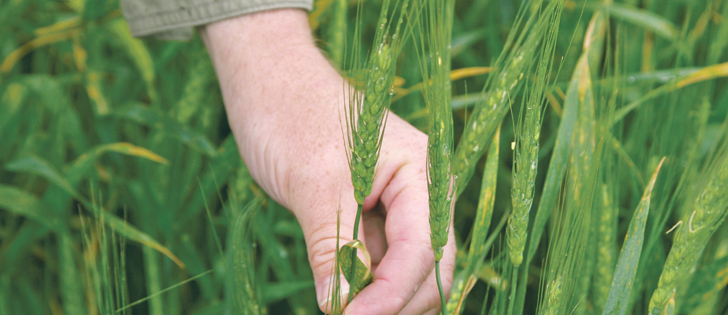U.S. farmers planted the second smallest winter wheat crop in more than a century of recorded history last year.
This year’s crop may be even smaller, according to executives of wheat groups in three states that account for half of the acres.
“There is no market signal right now to increase wheat acres and until that turns you’ll probably continue to see wheat acres about where they were last year, if not a little lower,” said Justin Gilpin, chief executive officer of Kansas Wheat.
Read Also

Volatile temperatures expected for this winter
DTN is forecasting a lot of temperature variability in the Canadian Prairies this winter. Precipitation should be close to average.
Cash soybean prices in central Kansas are US$9.20 per bushel while wheat is selling for $3.30.
It doesn’t help that it is dry in the central part of the United States.
“That’s probably going to curtail any additional wheat planting also,” he said.
Farmers dealing with parched soil will be reluctant to double crop wheat on the back of soybeans.
There was also a big problem with wheat streak mosaic virus in western Kansas this year.
“That’s going to be diligently watched by farmers and that will also impact some wheat planting decisions,” said Gilpin.
Mike Schulte, director of the Oklahoma Wheat Commission, agrees with Gilpin’s assessment of a potentially smaller crop.
“I don’t think it’s going to be bigger by any means. I don’t think producers are going in with that mindset right now,” he said.
There has been a big increase in cotton acres in southwest Oklahoma and more sorghum and soybeans in northern areas.
“We could see an actual harvest acre decline because producers will probably opt to do a lot more grazing this year based on the price,” said Schulte.
Normally, it would be “full steam ahead” for winter wheat planting at this time of year but growers are holding off, waiting for rain to replenish soil moisture levels.
“We had excessive moisture in August and we didn’t think that was going to be an issue but currently conditions are extremely dry,” he said.
Rodney Mosier, executive vice-president of Texas Wheat, expects growers will plant 4.7 million acres in that state, which is identical to last year, and will harvest 2.5 to three million acres, which at the low end is the same as last year.
Usually six million are planted and three million harvested.
Growers are planting cotton because the returns are better.
Wheat farmers typically harvest about half of what they plant due to grazing in areas like the Texas Panhandle.
Texas has better planting conditions than Kansas and Oklahoma.
“We’re in pretty good shape moisture-wise this year,” said Mosier.
Gilpin said the demand picture for wheat is good; it’s the oversupply that is weighing on prices.
Global demand has risen more than one hundred million tonnes in the last decade to 737 million tonnes this year, up from 614 million tonnes in 2007.
“The story of wheat demand is still there, we just haven’t had any hiccups in production that really highlight that,” he said.
















